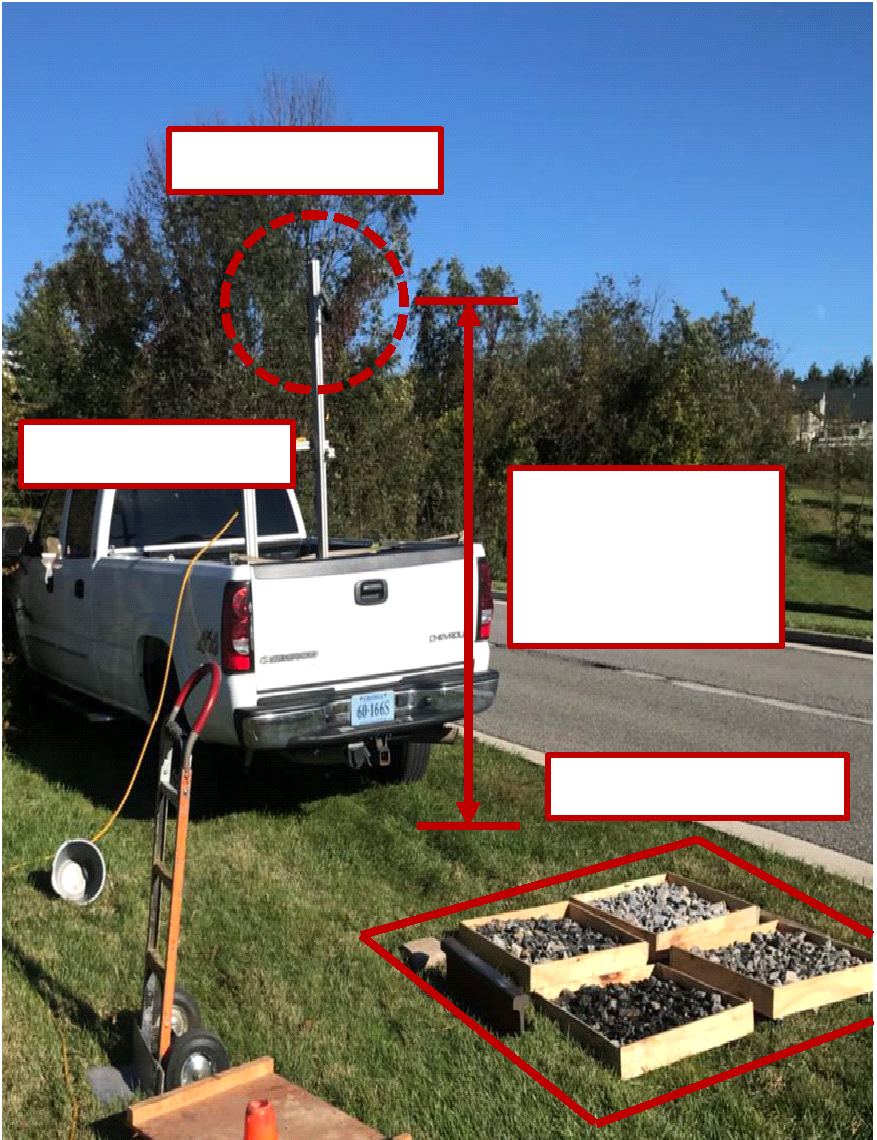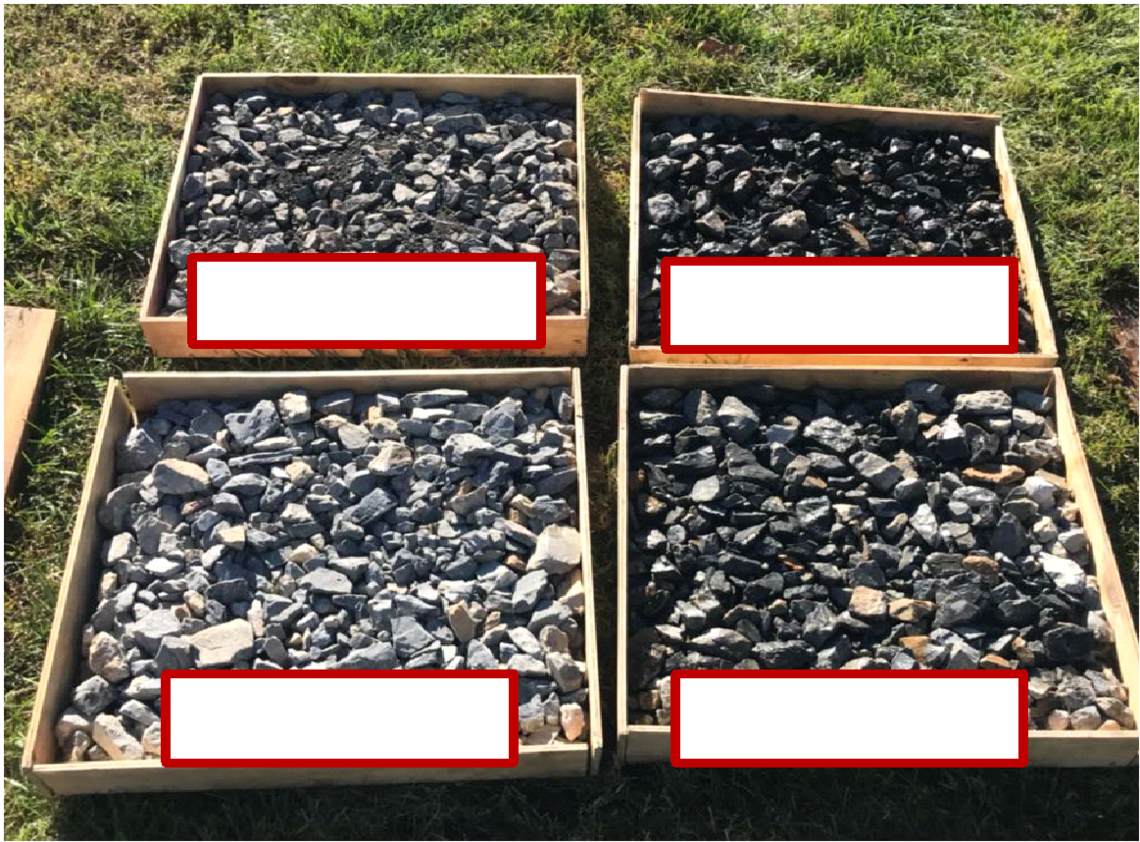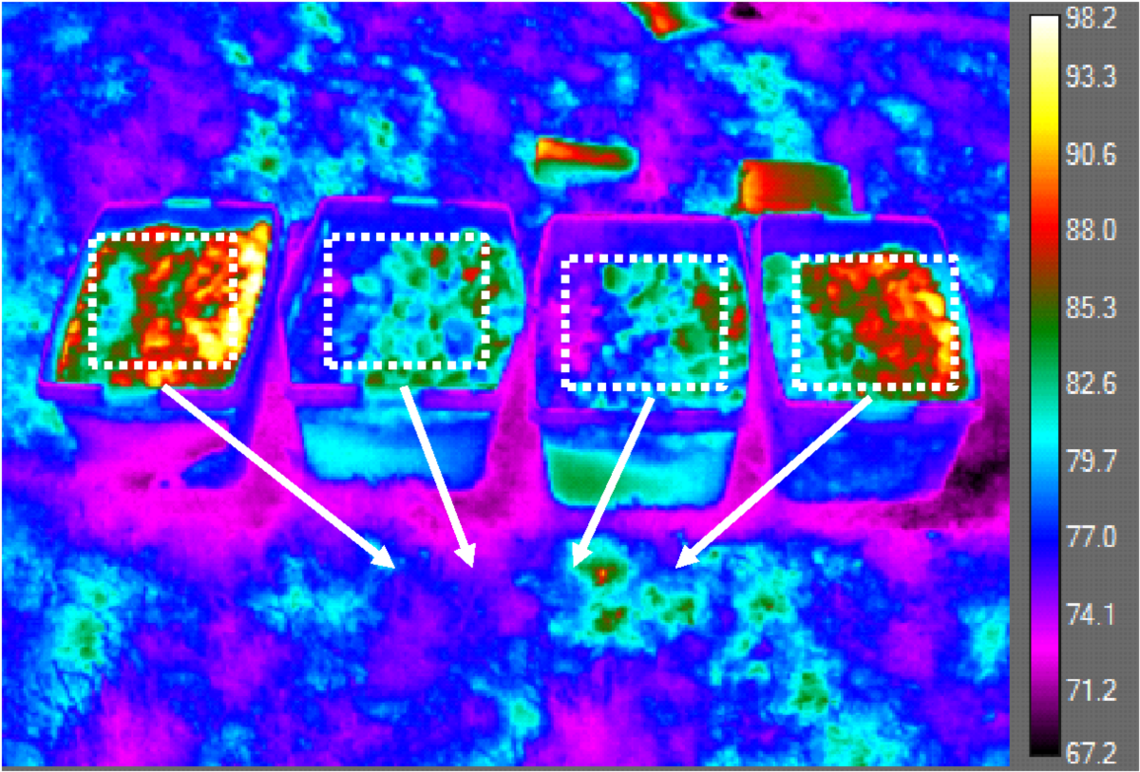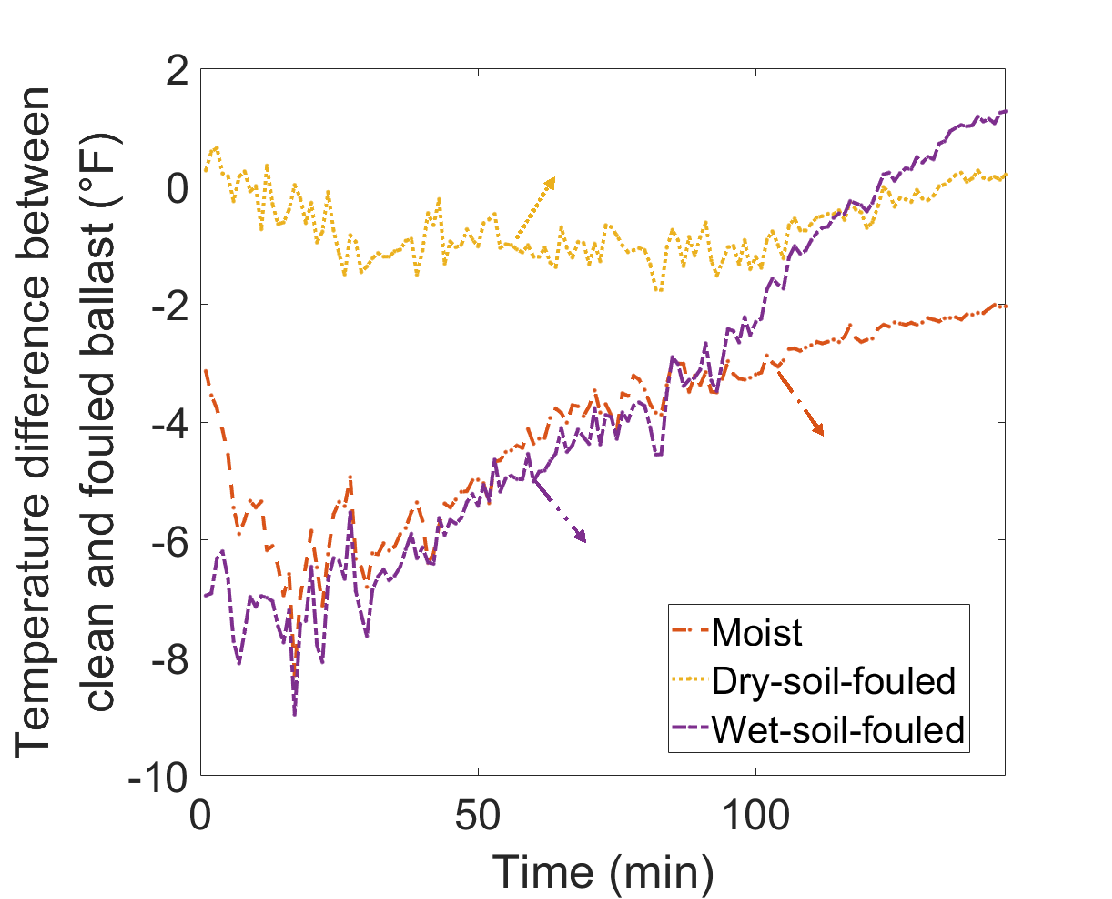Principal Investigator/Researcher
Dr. Mehdi Ahmadian, Virginia Tech
Project Description
The feasibility and limitations of Forward Looking Infrared Radiometer (FLIR) Aerial Technology for detecting fouled ballasts is studied in this project. The method is intended to provide an efficient and ready-to-use approach that can help the railroads detect fouled ballasts in their early stages. Ballast fouling commonly occurs as a result of fine particles clogging off water passage through them. Subsequently, this results in trapped water that often results in poor foundation strength, rotting of the ties, and other ill effects.
This study includes a novel approach to evaluate the railway ballast fouling by using thermal imaging techniques. A simple setup for implementing ballast fouling of different amounts have been implemented in the lab. For the purpose of laboratory testing, the camera is set up in stationary and moving configurations. The thermal characteristics of clean and fouled ballasts are studied using FLIR cameras that can be used onboard rolling stock, Hyrail trucks, or drones. Laboratory tests are primarily performed to measure the surface temperature changing rate of clean and fouled ballasts in response to ambient temperature changes.
The test results indicate that clean and fouled ballasts have different thermal characteristics. In particular, different thermal patterns are obtained during naturally-occurring daily temperature change. The test results also indicate that the FLIR cameras can be used on a moving platform for quick scanning of thermal images of the ballasts that could be used for assessing the early stage of fouling.

Outdoor Test Set up
Implementation of Research Outcomes
The technologies related to determining the early stages of ballast fouling are currently under development as part of our efforts. The next step in our development is field testing of the approaches and technologies that are being evaluated. Once they are proven, we intend to pursue implementation as a pilot program, in collaboration with industrial partners.

Schematics of FLIR Camera Set up for Laboratory and Field Testing

Ballast Samples used for Outdoor Testing

Infrared Image of Ballasts Samples during Outdoor Testing

Temperature variation of Ballast in Different States when Exposed to Ambient Temperature Changes
Impacts/Benefits of Implementation
There exists no proven method for detecting the early stages of ballast fouling in practice. The technology that is under development in this project will have a major impact on the rail industry when it is implemented. It will result in better management of maintenance of way and potentially major cost savings for the railroads.